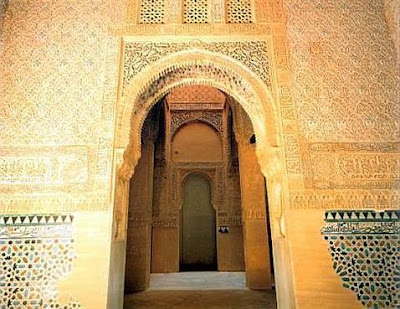From October 4th till April 20th in Thyssen Museum in Málaga
The exhibition Courbet, Van Gogh, Monet, Léger. From naturalist Landscape to the Avant-gardes in the Carmen Thyssen-Bornemisza Collection, organised in collaboration with Obra Social ”la Caixa”, focuses on the role of landscape painting in the renewal of modern art through the quest undertaken by artists for greater freedom of execution and direct contact with nature. At the same time, it reveals the interesting connections that arose between the principal Spanish painters and the most important artistic movements that simultaneously emerged in Europe.
Through a selection of more than forty works from the Carmen Thyssen-Bornemisza Collection, the exhibition offers a survey of landscape painting from the mid-19th century to 1950, relating the most important Spanish landscape painters such as Carlos de Haes, Eliseu Meifrèn and Santiago Rusiñol to the principal trends in international, particularly French art with the aim of seeking out affinities and influences.
The exhibition Courbet, Van Gogh, Monet, Léger. From naturalist Landscape to the Avant-gardes in the Carmen Thyssen-Bornemisza Collection, organised in collaboration with Obra Social ”la Caixa”, focuses on the role of landscape painting in the renewal of modern art through the quest undertaken by artists for greater freedom of execution and direct contact with nature. At the same time, it reveals the interesting connections that arose between the principal Spanish painters and the most important artistic movements that simultaneously emerged in Europe.
Through a selection of more than forty works from the Carmen Thyssen-Bornemisza Collection, the exhibition offers a survey of landscape painting from the mid-19th century to 1950, relating the most important Spanish landscape painters such as Carlos de Haes, Eliseu Meifrèn and Santiago Rusiñol to the principal trends in international, particularly French art with the aim of seeking out affinities and influences.
 |
| Claude Monet, Low Tide in Varengeville, 1882 |
In comparison to genre painters, whose work was governed by
strict rules, landscape painters achieved a greater degree of freedom by
establishing a direct dialogue with nature while also trying out new
techniques that incorporated scientific discoveries of the day. Thus for
late 19th-century artists, painting could not be confined to the
imitation of reality: beauty was the result of an internal order and
their conception of a painting as a flat plane covered with colours
anticipated the contribution of the 20th-century Avant-gardes. Around
1930 and following a period when landscape was to some extent eclipsed,
the Surrealists gave it a new meaning as the representation of the
subconscious.
Overall, the exhibition allows visitors to appreciate how landscape painting evolved over almost a century, from naturalism to the markedly introspective character of Avant-garde landscapes, while also taking into account the transition from post-Romanticism to Symbolism, the interest in light characteristic of Impressionism and the return to classicism.
Information from: Website Museum Carmen Thyssen M
Entrance fee for this exhibition: 4 €
Opening hours. from tuesday till sunday from 10:00 to 20:00
More information: Website Carmen Thyssen Museum
Overall, the exhibition allows visitors to appreciate how landscape painting evolved over almost a century, from naturalism to the markedly introspective character of Avant-garde landscapes, while also taking into account the transition from post-Romanticism to Symbolism, the interest in light characteristic of Impressionism and the return to classicism.
Information from: Website Museum Carmen Thyssen M
Entrance fee for this exhibition: 4 €
Opening hours. from tuesday till sunday from 10:00 to 20:00
More information: Website Carmen Thyssen Museum






























